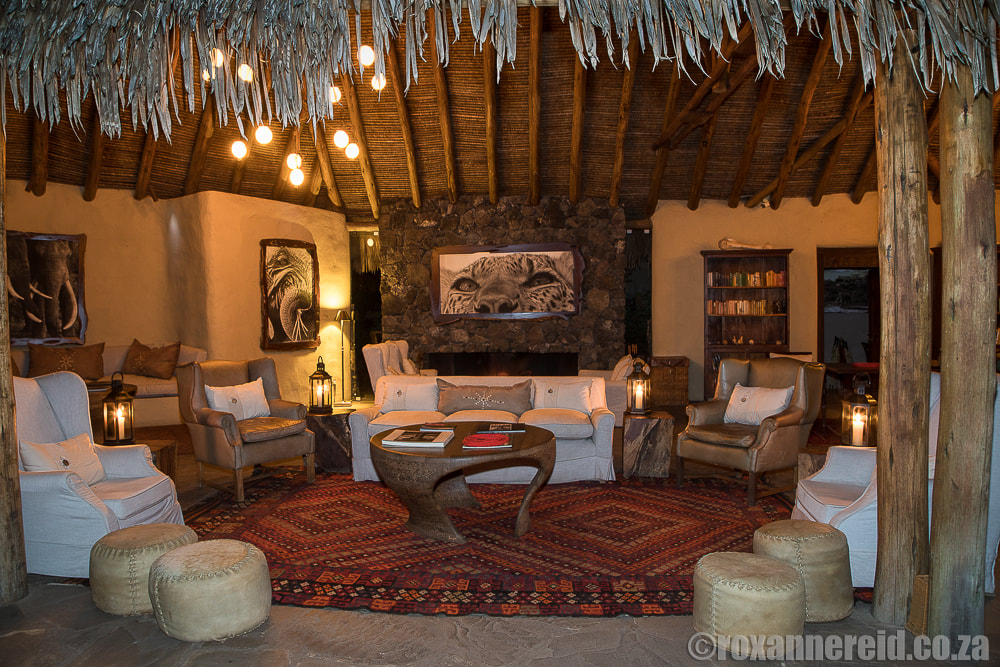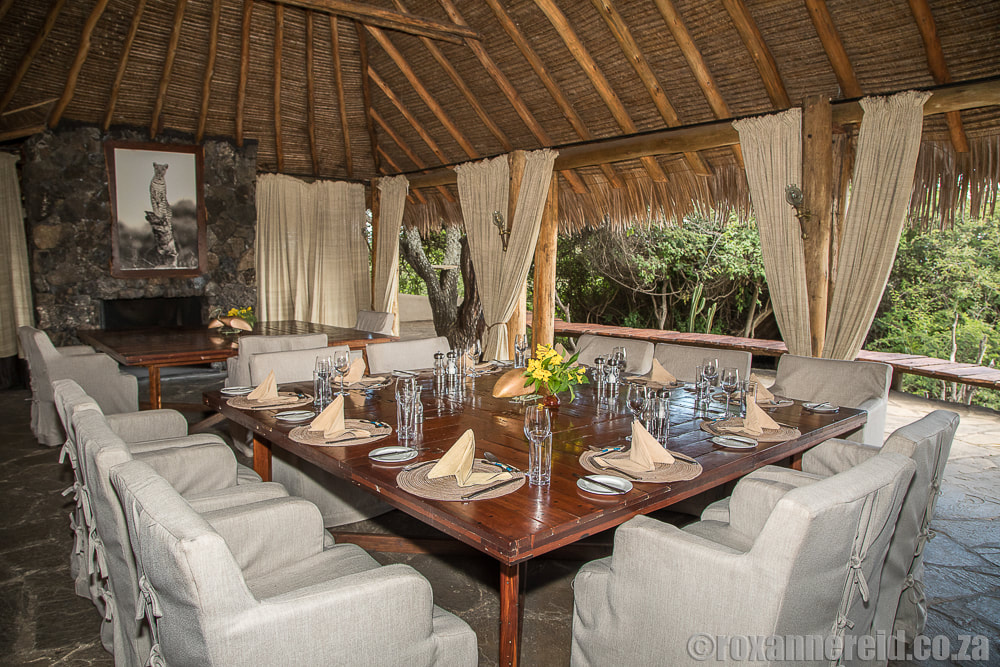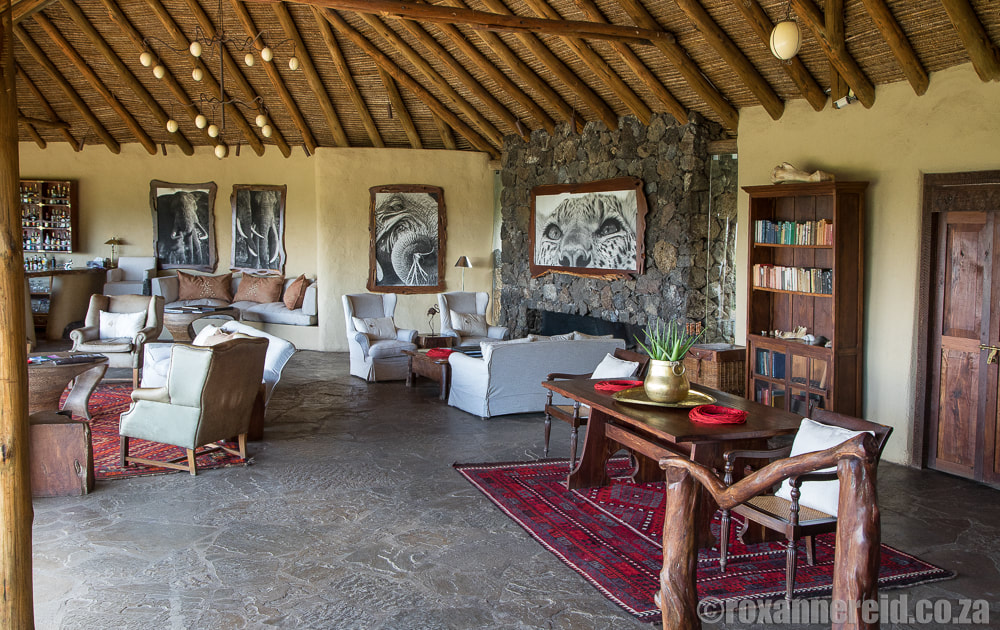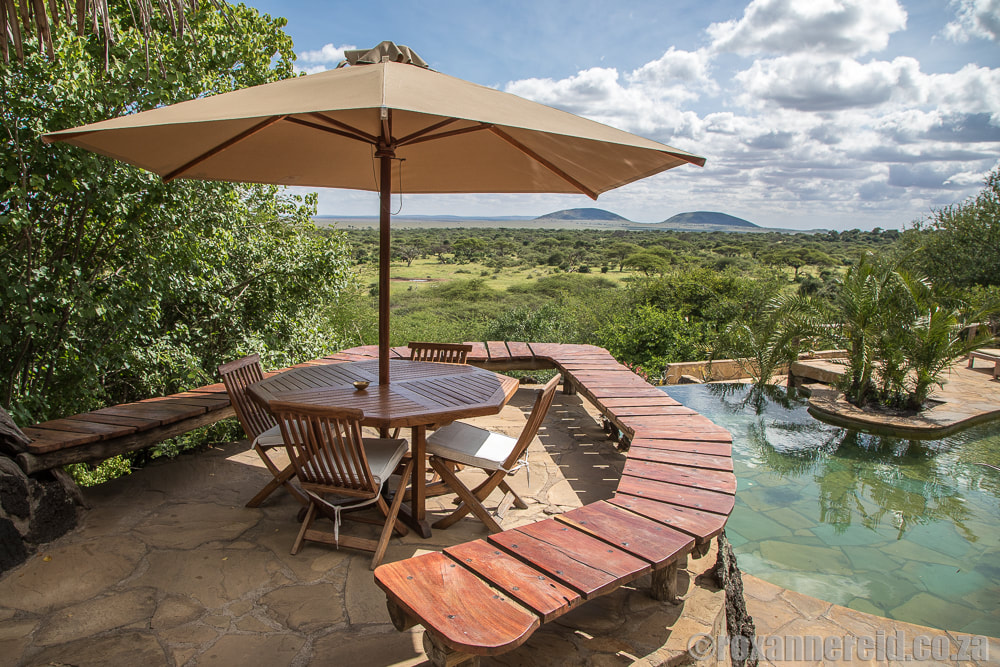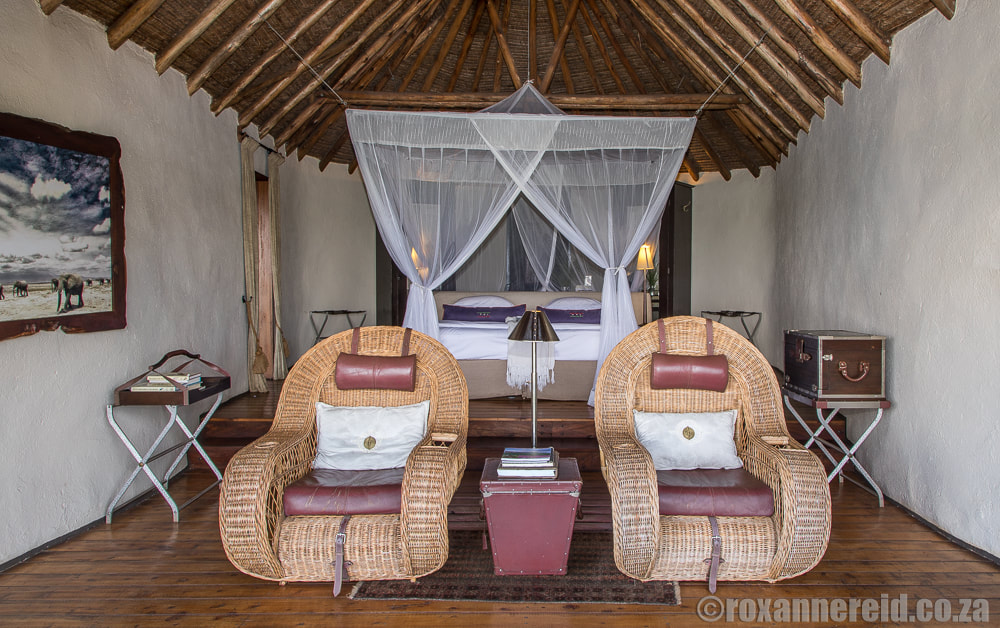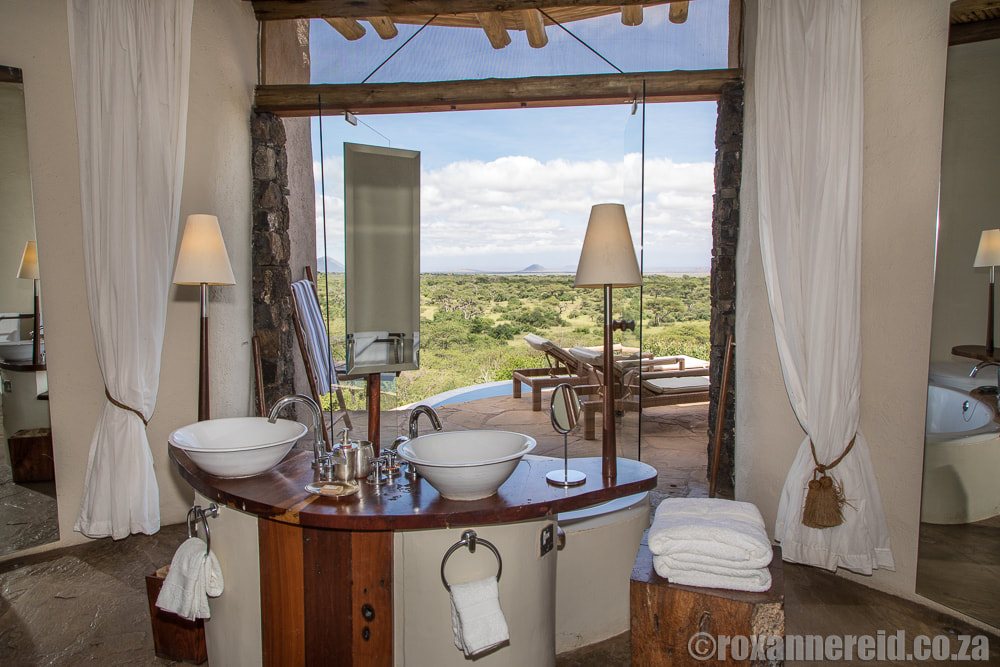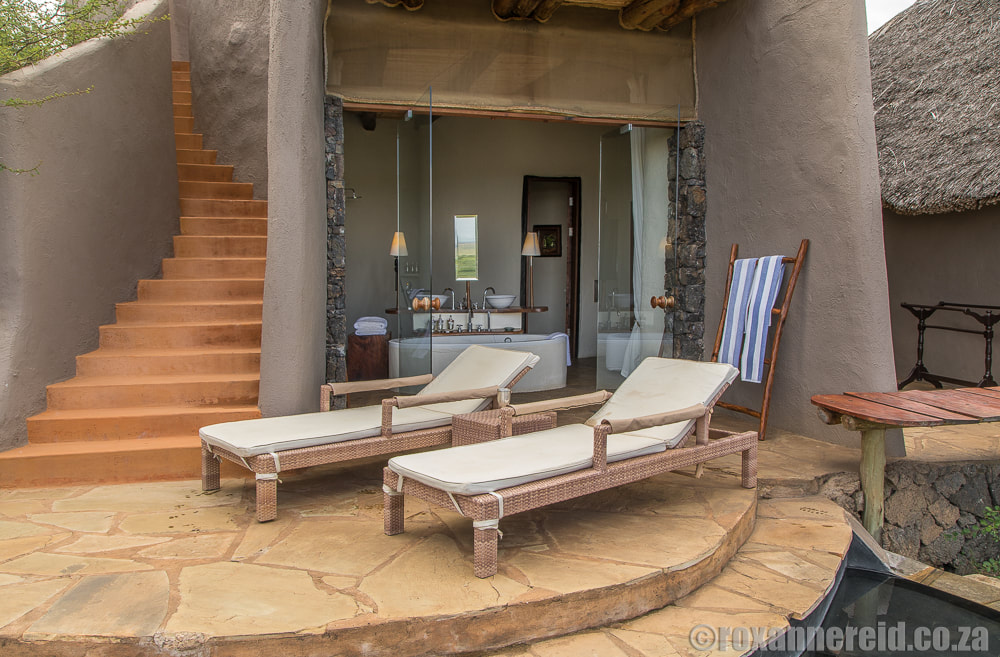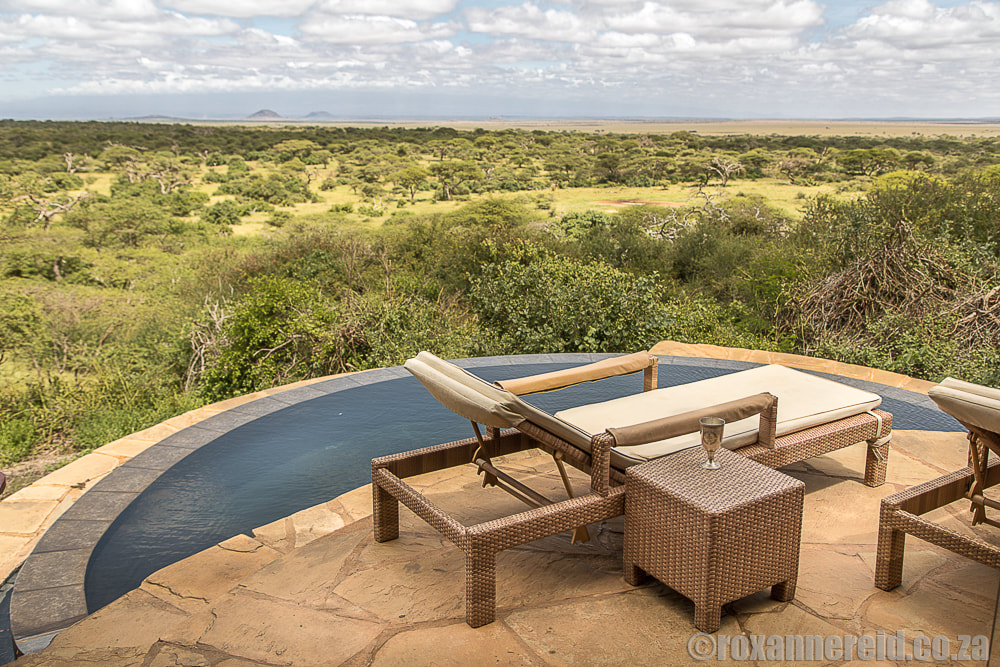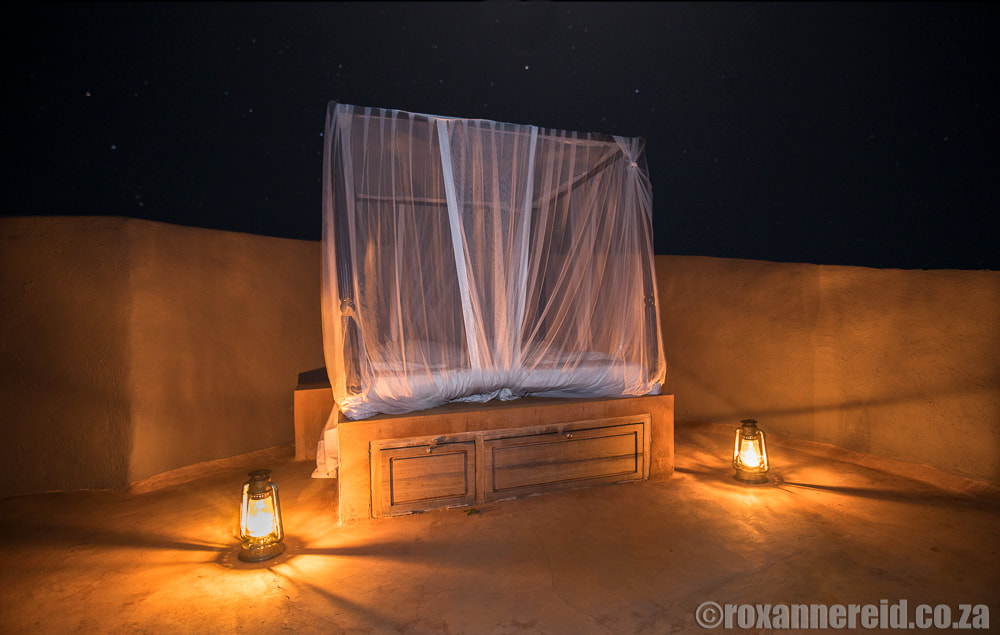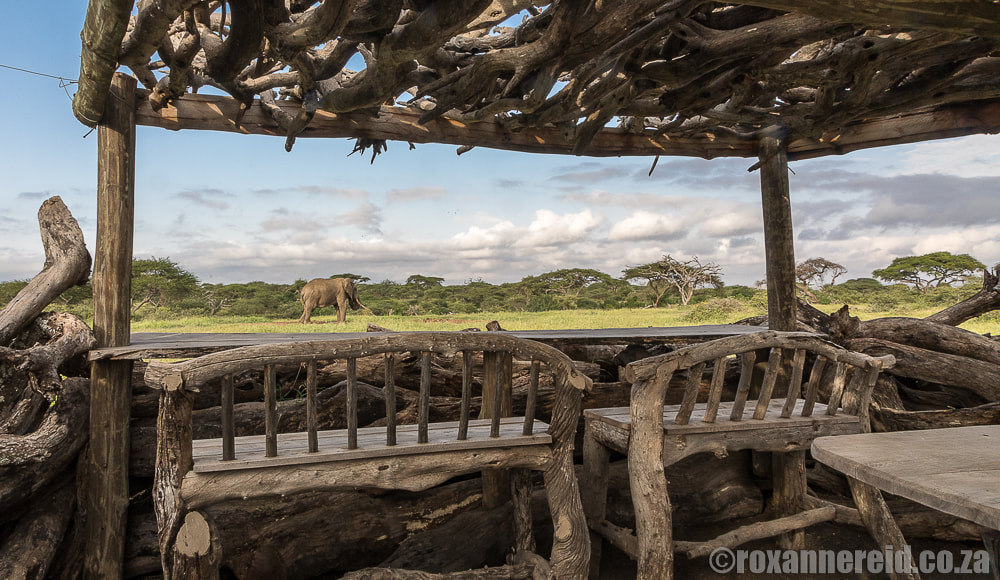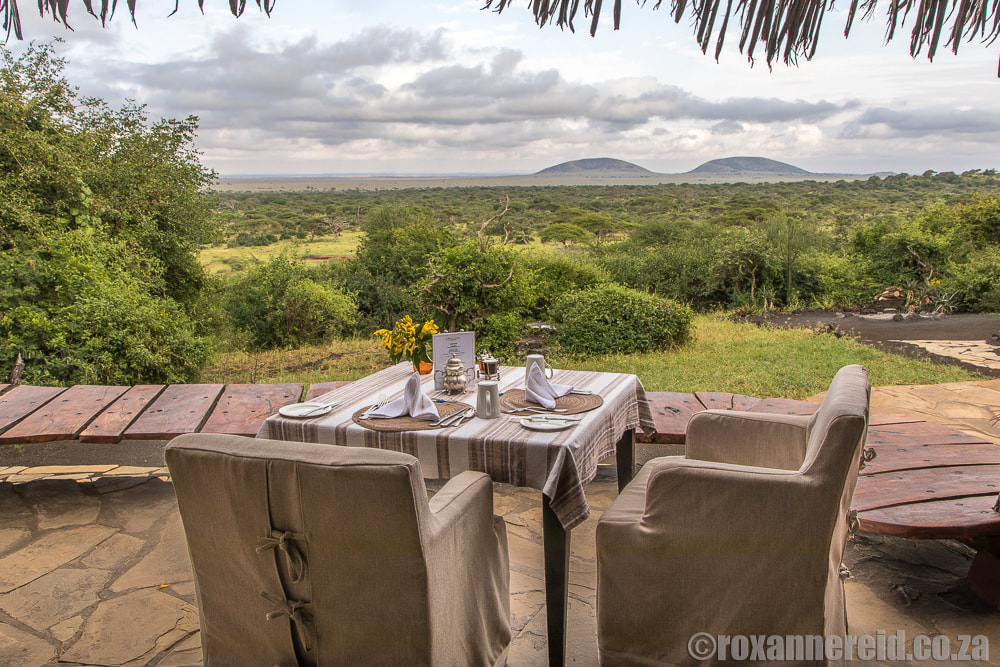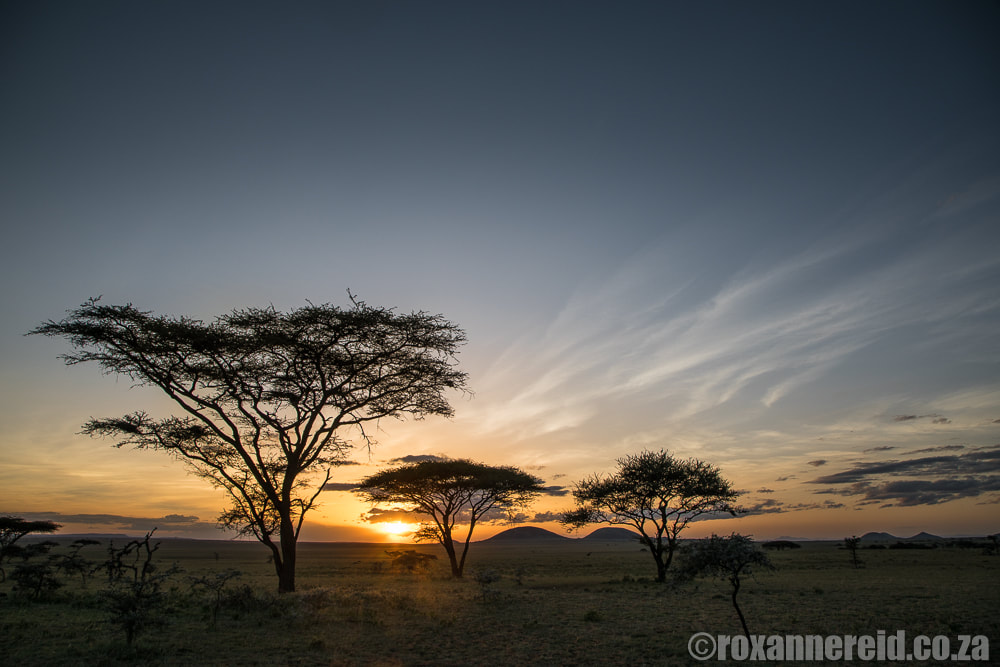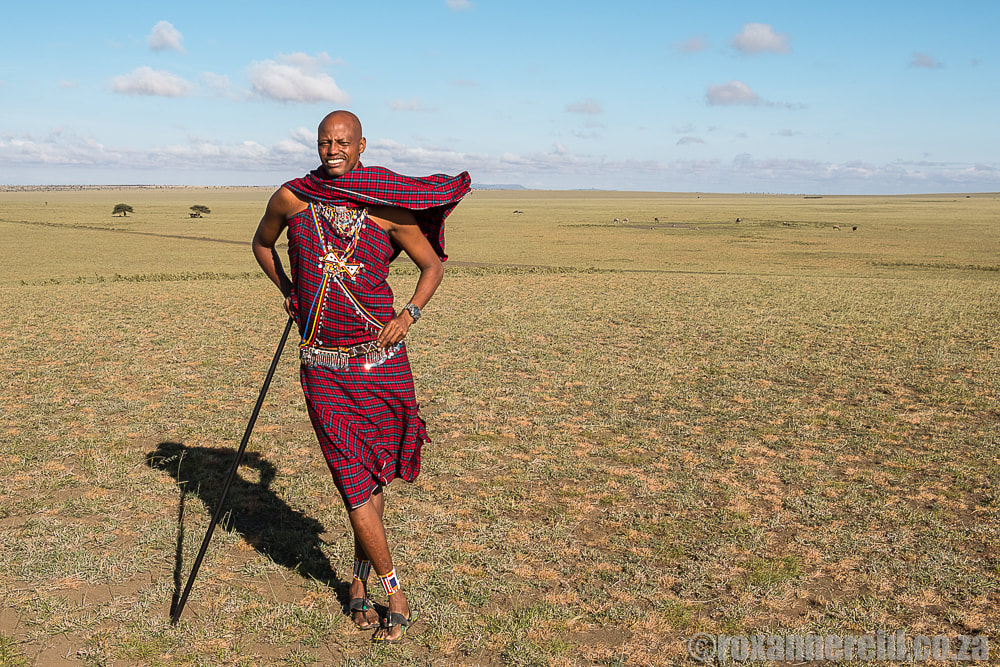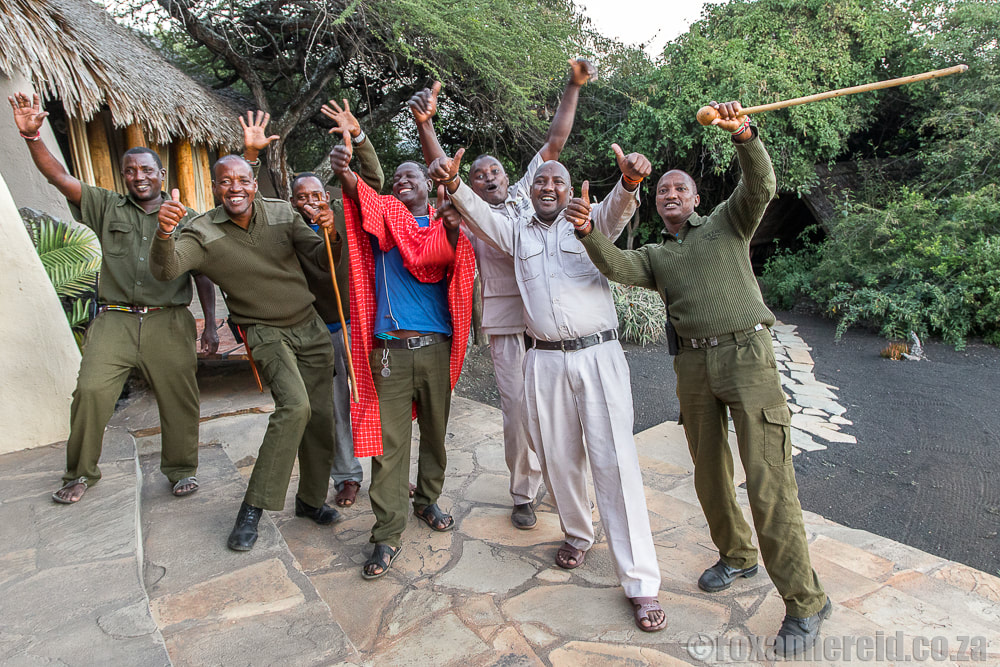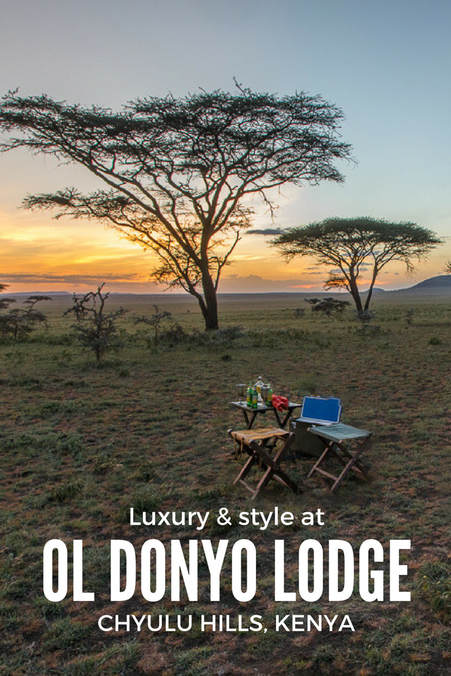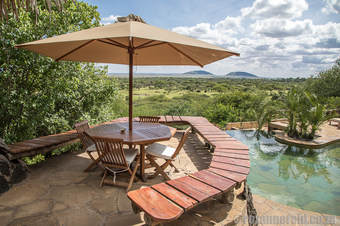
By Roxanne Reid
The Chyulu Hills in southeast Kenya were green when we visited in early June, surrounded by open plains sprinkled with trees – a place to see munching giraffes, white-bearded wildebeest, kongoni and gerenuk. This is Maasai land so sometimes you see a herder with a bright red shuka in the distance, standing out in relief against a herd of dusty cows.
The Chyulu Hills in southeast Kenya were green when we visited in early June, surrounded by open plains sprinkled with trees – a place to see munching giraffes, white-bearded wildebeest, kongoni and gerenuk. This is Maasai land so sometimes you see a herder with a bright red shuka in the distance, standing out in relief against a herd of dusty cows.
Here in a patch of woodland wilderness is ol Donyo Lodge, built of dark volcanic rock with thatched roofs. The sprawling main reception area overlooks a waterhole and is the warm heart of the lodge, where guests gather to browse the small library, relax on the verandah or have a drink at the bar. You can eat lunch on the deck, cool off in the infinity pool or ask to see the well-stocked wine cellar – something of a passion of manager Shaun’s.
Four of us enjoyed dinner in the wine cellar one night – succulently satisfying lamb shanks and a decadent chocolate torte rustled up by chef Tim Okoth in first-rate Relais & Châteaux style. Ol Donyo is one of only two Relais & Châteaux properties in Kenya, the other being Great Plains Conservation’s Mara Plains Camp in the Maasai Mara.
The rooms
The sophisticated but unpretentious style of the main area was echoed in our room, with wicker armchairs facing the waterhole and Mount Kilimanjaro in the distance. Wooden floors, an old-fashioned tea chest and writing desk added to the sense of warm homeliness. The front of the bedroom and sitting area was completely open to merge indoor and outdoor living, but thick curtains could be pulled across the gap on chilly nights.
The sophisticated but unpretentious style of the main area was echoed in our room, with wicker armchairs facing the waterhole and Mount Kilimanjaro in the distance. Wooden floors, an old-fashioned tea chest and writing desk added to the sense of warm homeliness. The front of the bedroom and sitting area was completely open to merge indoor and outdoor living, but thick curtains could be pulled across the gap on chilly nights.
The adjoining bathroom was so big we could have treated ourselves to some ballroom dancing between the oval free-standing bath, the double basins and the indoor shower. Floor to ceiling glass doors gave a widescreen view of the waterhole and surrounding plains, while an outdoor shower beckoned next door, also with a view of the woodland in front of the lodge, the waterhole and the open plains and hills beyond.
A large tusker came to drink at the waterhole shortly after we arrived, stayed about 20 minutes then moved to the shade for a scratch before ambling off. Giraffe, warthog, baboons, zebra and more elephants also came down to drink during the afternoon. All the elephants in this area are bulls because there isn’t enough water for breeding herds. Grey water from the lodge is filtered and then piped to the waterhole.
For added touches of luxury there was a private rim-flow plunge pool and loungers on our verandah, and a star bed upstairs on the roof terrace. The bed was made up at night, draped in insect netting and left to lure us into a romantic world of star gazing.
The hide
Before breakfast one morning we walked down to the hide at the waterhole to watch an elephant, so close we could smell him, a dusty-grassy scent with a hint of compost. Giraffe browsed on the trees to the right and spotted hyena whooped offstage to the left, while rattling cisticolas, barbets and ring-necked doves added to the harmony.
It was a peaceful place to sit for a while, drinking in the sights, smells and sounds of nature before heading out on yet another activity. There’s no lack of things to do in the lava fields, woodland, savannah and koppies around here – from game drives and horse riding to bush walks or a visit to a local Maasai village. But I’ll tell you more about all that in another post.
Before breakfast one morning we walked down to the hide at the waterhole to watch an elephant, so close we could smell him, a dusty-grassy scent with a hint of compost. Giraffe browsed on the trees to the right and spotted hyena whooped offstage to the left, while rattling cisticolas, barbets and ring-necked doves added to the harmony.
It was a peaceful place to sit for a while, drinking in the sights, smells and sounds of nature before heading out on yet another activity. There’s no lack of things to do in the lava fields, woodland, savannah and koppies around here – from game drives and horse riding to bush walks or a visit to a local Maasai village. But I’ll tell you more about all that in another post.
Eco-tourism
Great Plains Conservation, which owns ol Donyo Lodge, is the brainchild of wildlife film-makers, photographers and conservationists Dereck and Beverly Joubert. Its guiding principle is to use low-volume, low-impact photographic eco-tourism as a tool to sustain conservation projects that protect wilderness, lions, rhinos, elephants and other wildlife.
For its lodges, this also means eco-wise systems such as solar energy, rainwater capture, water filtration and gas from bio-digesters for heating and cooking. All waste at ol Donyo is separated and transported back to Nairobi – a four-hour drive away – for recycling.
Great Plains Conservation, which owns ol Donyo Lodge, is the brainchild of wildlife film-makers, photographers and conservationists Dereck and Beverly Joubert. Its guiding principle is to use low-volume, low-impact photographic eco-tourism as a tool to sustain conservation projects that protect wilderness, lions, rhinos, elephants and other wildlife.
For its lodges, this also means eco-wise systems such as solar energy, rainwater capture, water filtration and gas from bio-digesters for heating and cooking. All waste at ol Donyo is separated and transported back to Nairobi – a four-hour drive away – for recycling.
Community tourism
Ol Donyo Lodge is on the 275,000-acre Mbirikani ranch that belongs to 4000 Maasai families. Great Plains Conservation pays them lease fees and a per-head conservancy fee for the privilege of using their land for tourism. This guarantees them an income and at the same time helps to maintain the wilderness area and conserve the wildlife that lives here.
Ol Donyo Lodge is on the 275,000-acre Mbirikani ranch that belongs to 4000 Maasai families. Great Plains Conservation pays them lease fees and a per-head conservancy fee for the privilege of using their land for tourism. This guarantees them an income and at the same time helps to maintain the wilderness area and conserve the wildlife that lives here.
More than 80% of the staff at the lodge comes from the local community too. Even our guide, Konee Kinyaku, was a proud Maasai with red-checked shuka knotted over one shoulder, beads and silver on his chest and around his waist. It was great to engage him and other staff in conversation and hear their perspective about all sorts of topics from conservation and tourism to culture and daily life.
Another 130 people are employed in conservancy management of the greater area, many of them former poachers now trained to be conservationists who protect the wildlife from poaching. And that’s a turnaround to be thrilled about.
Of course it’s wonderful to experience luxury while on safari. It’s even more special to know that the lodge you’ve chosen gives local people an economic stake in tourism and protects wildlife for future generations.
Note: I was a guest of Great Plains Conservation’s ol Donyo Lodge for two nights, but I was given free rein to write what I chose.
Did you enjoy the article? Pin this image!
Of course it’s wonderful to experience luxury while on safari. It’s even more special to know that the lodge you’ve chosen gives local people an economic stake in tourism and protects wildlife for future generations.
Note: I was a guest of Great Plains Conservation’s ol Donyo Lodge for two nights, but I was given free rein to write what I chose.
Did you enjoy the article? Pin this image!
More about Kenya
Copyright © Roxanne Reid - No words or photographs on this site may be used without permission from roxannereid.co.za
Copyright © Roxanne Reid - No words or photographs on this site may be used without permission from roxannereid.co.za
